Air Pressure and Winds
1/67
There's no tags or description
Looks like no tags are added yet.
Name | Mastery | Learn | Test | Matching | Spaced |
|---|
No study sessions yet.
68 Terms
Describe how atmospheric pressure changes with increasing altitude
As altitude increases, atmospheric pressure decreases.
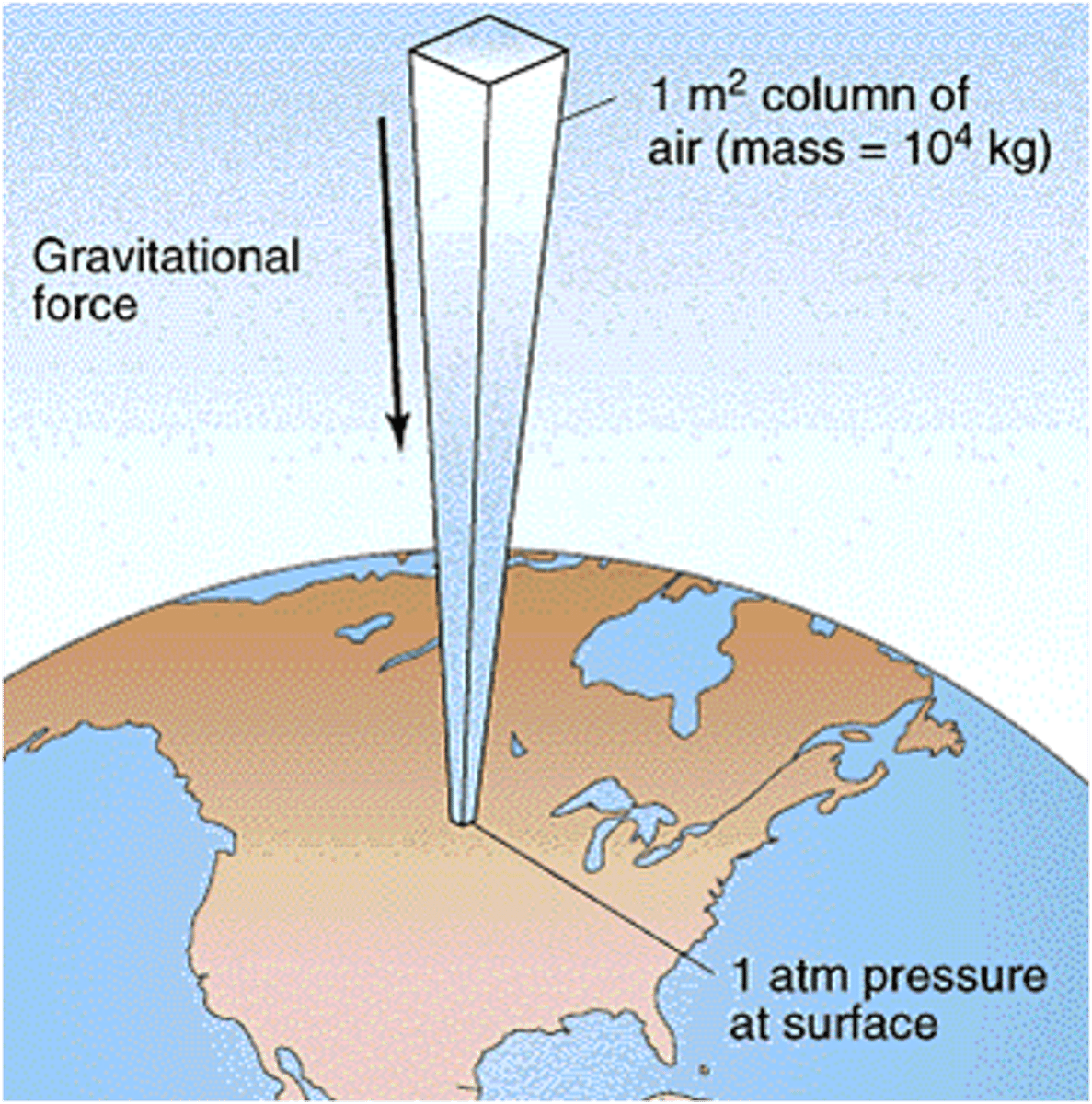
If the ground is warm, describe the pressure on the top and bottom of an air column.
The bottom would be low pressure (lense dense because its hotter) and the top would be high pressure (cooler than the bottom and less dense).
If the ground is cool, describe the pressure on the top and bottom of an air column.
The bottom would be high pressure (more dense because it's cooler) and the top would be low pressure (warmer than the bottom and less dense).
What is the average air pressure on earth in kPa?
101.325 kPa
convert kPa to millibars to bars
1 kPa has 10 millibars
1 bar has 100 kPa
1 bar has 1000 millibars
1 bar has 100,000 Pa
The force that causes air to move from high to low pressure is called what?
The pressure gradient force
What is wind?
The movement of air in response to a pressure gradient
What determines the strength of wind?
The magnitude of the pressure gradient.
Hot air is what pressure?
Low
Cold air is what pressure?
High
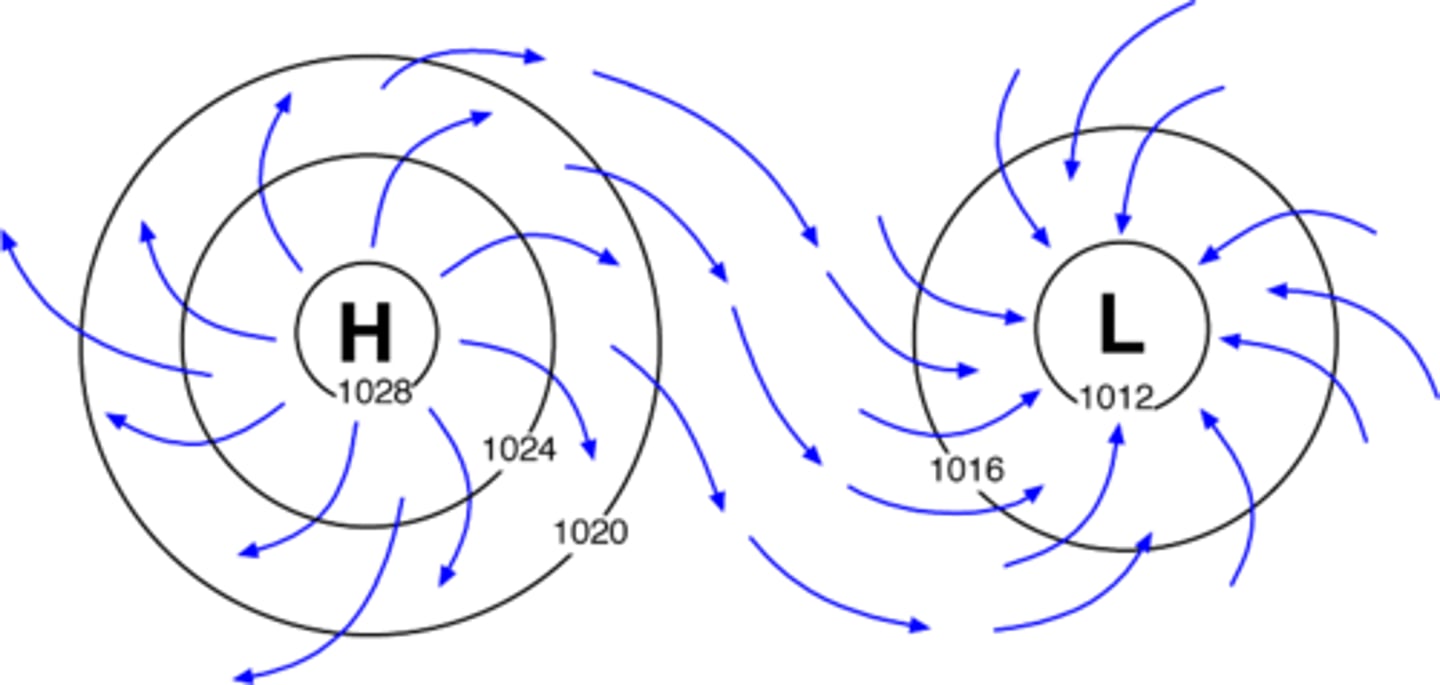
How does Coriolis effect influence wind?
It curves the path of wind
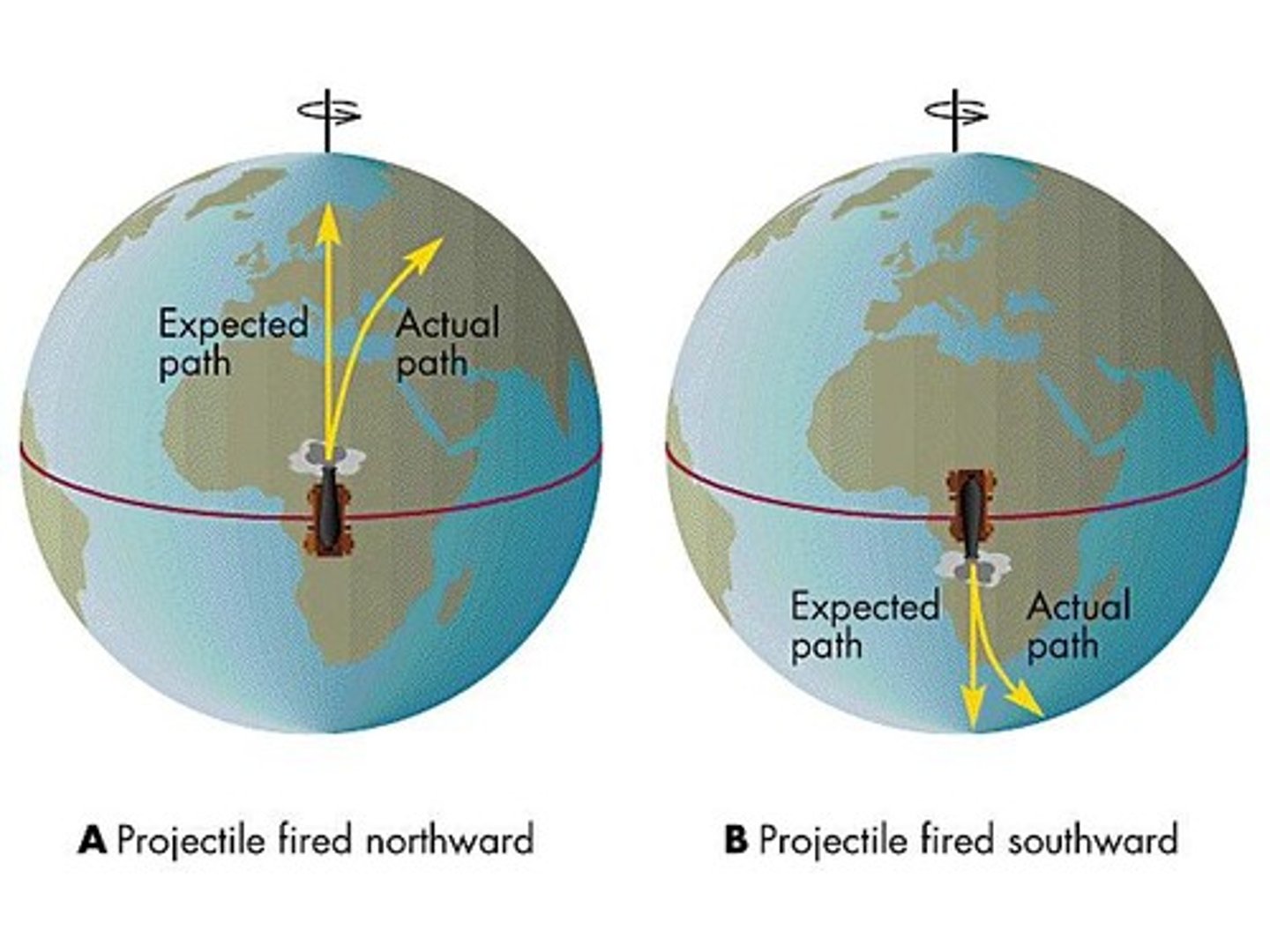
What direction would wind go without the coriolis force?
Forward with no curve. Parallel to the equator.
Is the coriolis effect to the right or left in the southern and northern hemisphere respectively?
Northern: Right
Southern: Left
If earth were not rotating, what would the direction of SURFACE wind be relative to isobars?
Perpendicular. Isobars are perpendicular to wind. Wind travels from high to low pressure.
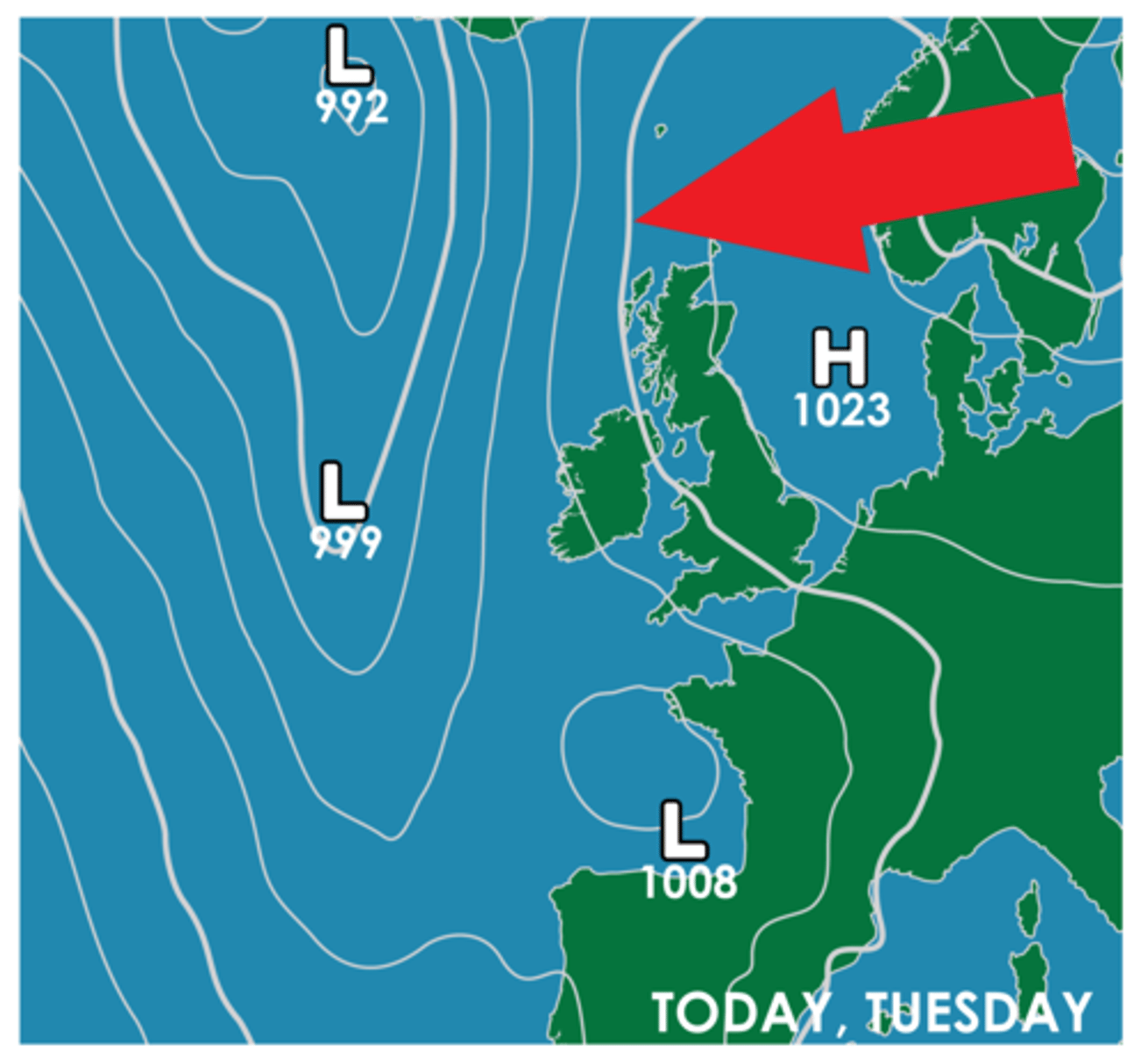
Surface features can influence wind.
ok
Wind travelling over a body of water increases speed. Why?
The water has lower friction.
Wind travelling over a body of water has a greater Coriolis deflection. Why?
The increase in speed caused by decreased friction increases the deflection.
The magnitude of coriolis deflection is dependent on what?
Flow velocity.
How does the coriolis effect create cyclones and anticyclones?
1. Wind moves away from high pressure and towards low pressure.
2. The Coriolis effect curves wind movement.
3. Wind rotates inwards into low pressure zones and outwards from high pressure zones.
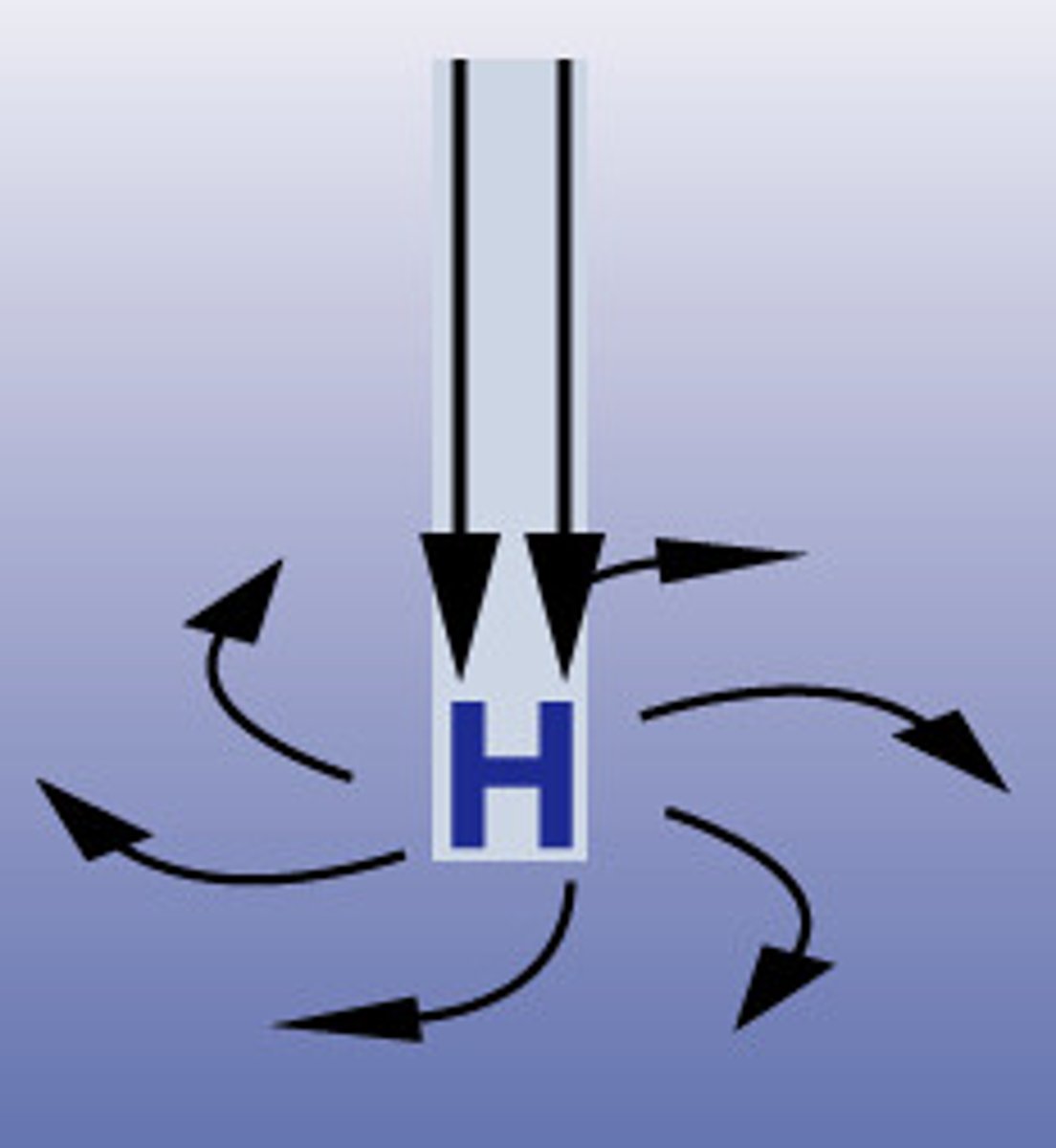
What causes anticyclones?
High pressure
What causes cyclones?
Low pressure
Compare the direction of surface winds to aloft winds.
Surface winds flow at an angle to isobars, ideally perpendicular. Aloft winds flow parallel to isobars.
Winds that flow parallel to isobars (aloft winds) are also known as?
Geostrophic winds
Why do geostrophic winds flow parallel to isobars?
The forces of the coriolis effect and the pressure gradient are relatively equal, causing the wind to flow in neither direction. The forces are balanced and they flow parallel to isobars.
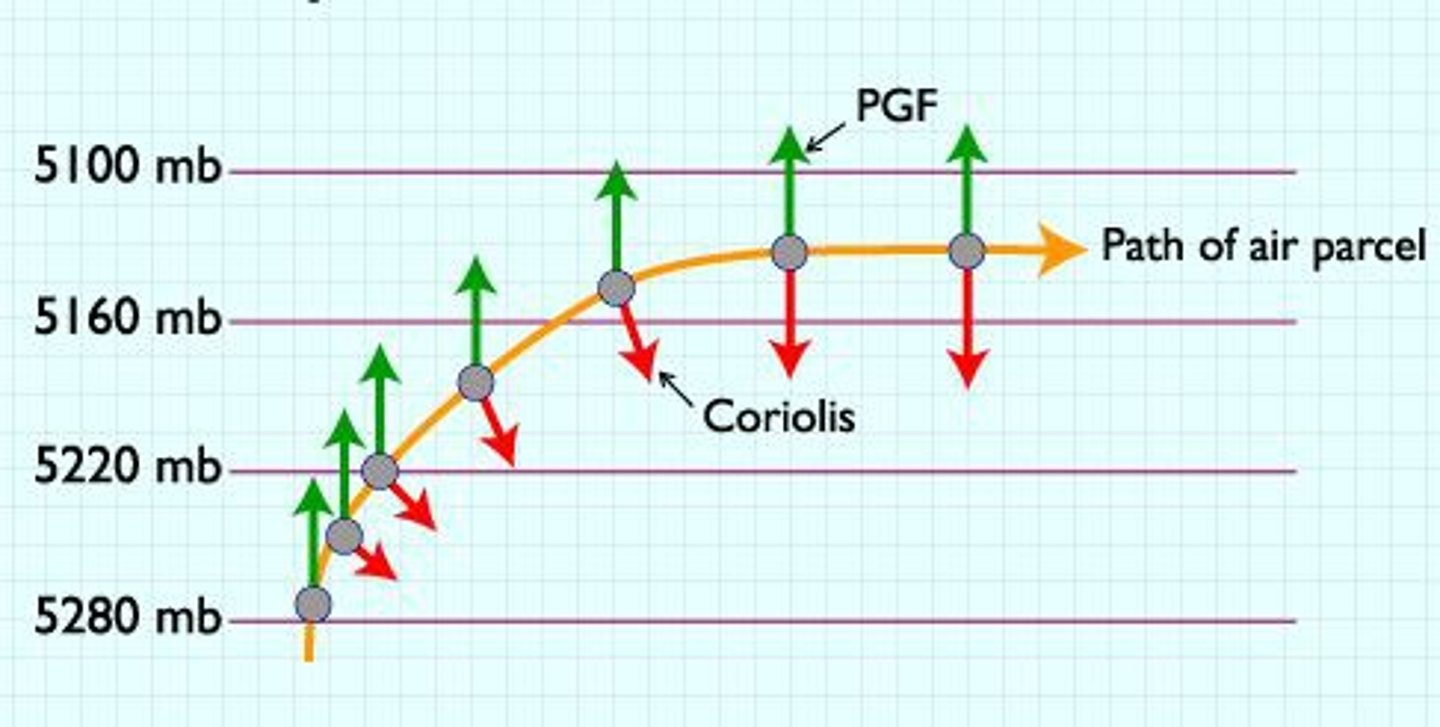
Why don't surface winds flow parallel to isobars?
Surface winds are slowed down by surface friction. This decreases the magnitude of the coriolis effects and allows them to flow from high to low pressure.
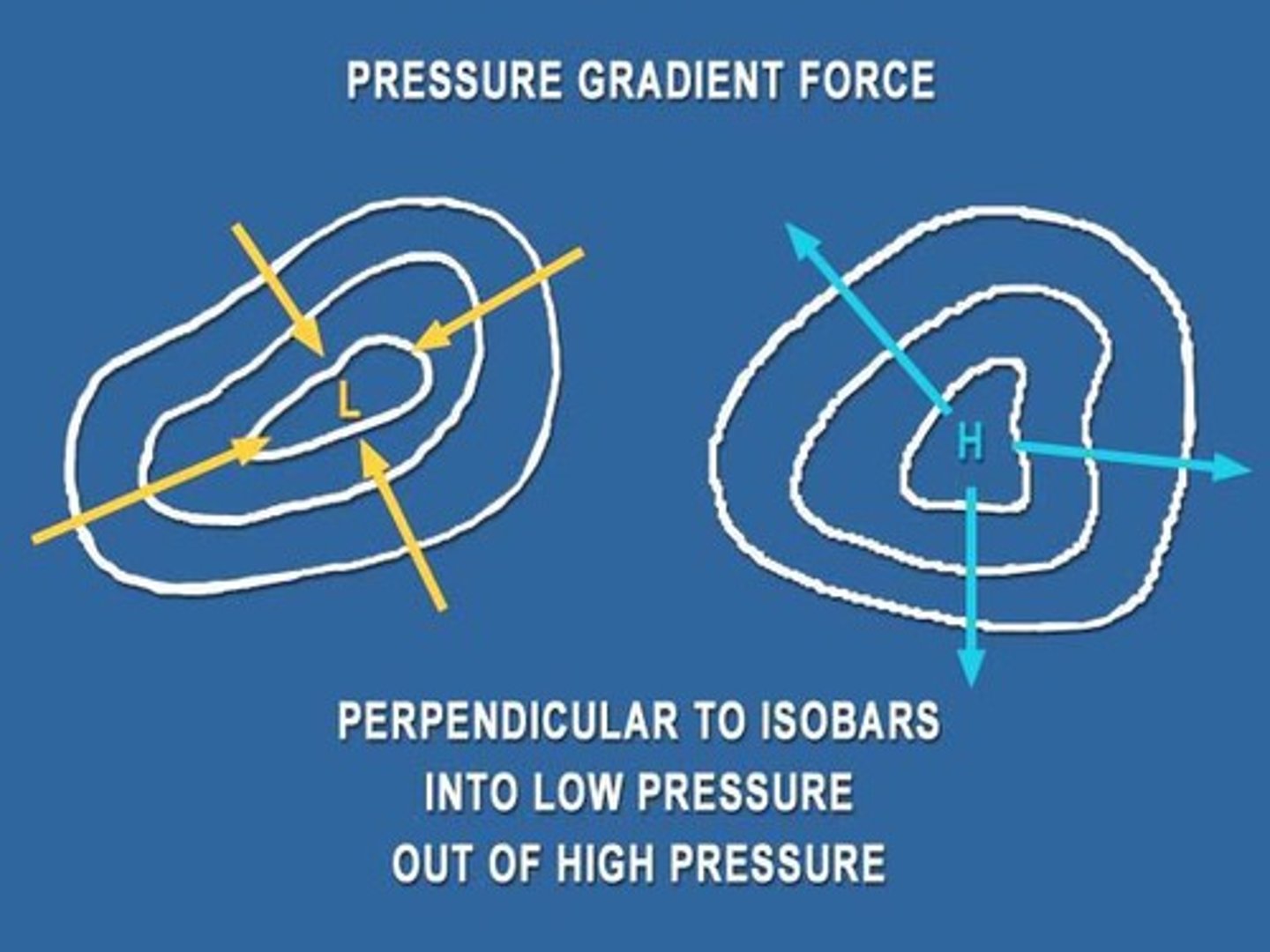
Where is most of the mass of the atmosphere?
90% of atmospheric mass is contained 10 km from the surface of the earth.
How are surface cyclones and anticyclones maintained?
The pressure systems aloft/above it.
what happens to air in a cyclone (low pressure)?
1. Air move inwards towards the low pressure
2. The air gets pushed up
3. The air above diverges
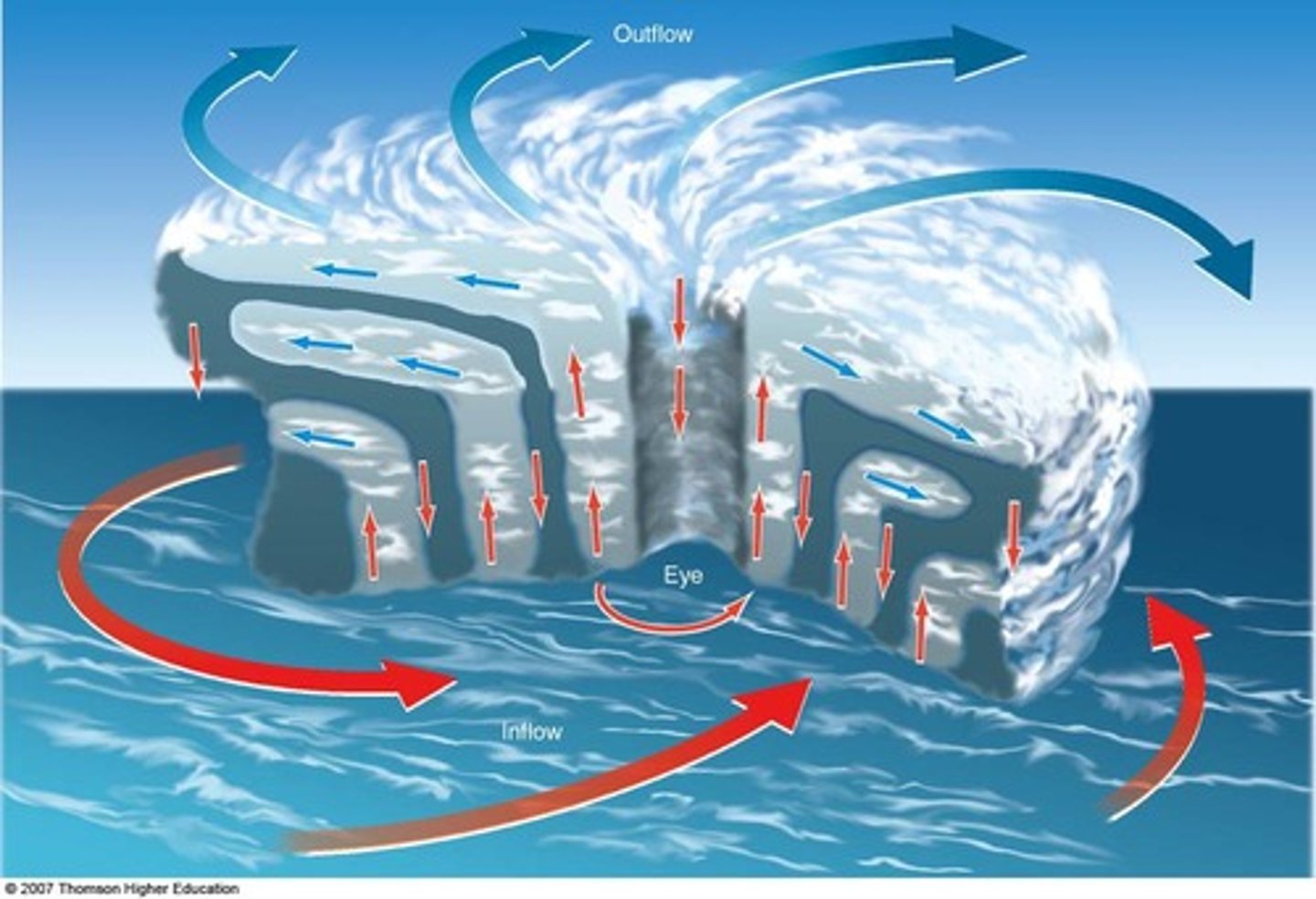
what happens to air in an anticyclone (high pressure)?
1. Air moves away from the high pressure
2. The air above converges.
2. The air above gets sucked in towards the ground
High pressure and low pressure systems on the surface. Divergence and convergence aloft.
OK
What would happen if surface and aloft pressure systems did not correspond? (Ex. low pressure surface corresponding with divergence aloft)
The pressure system would equalize and cease to exist.
Define convergence and divergence.
Convergence: Wind spreading inward
Divergence: wind spreading outward
What drives global circulation?
The uneven heating of the earth's surface
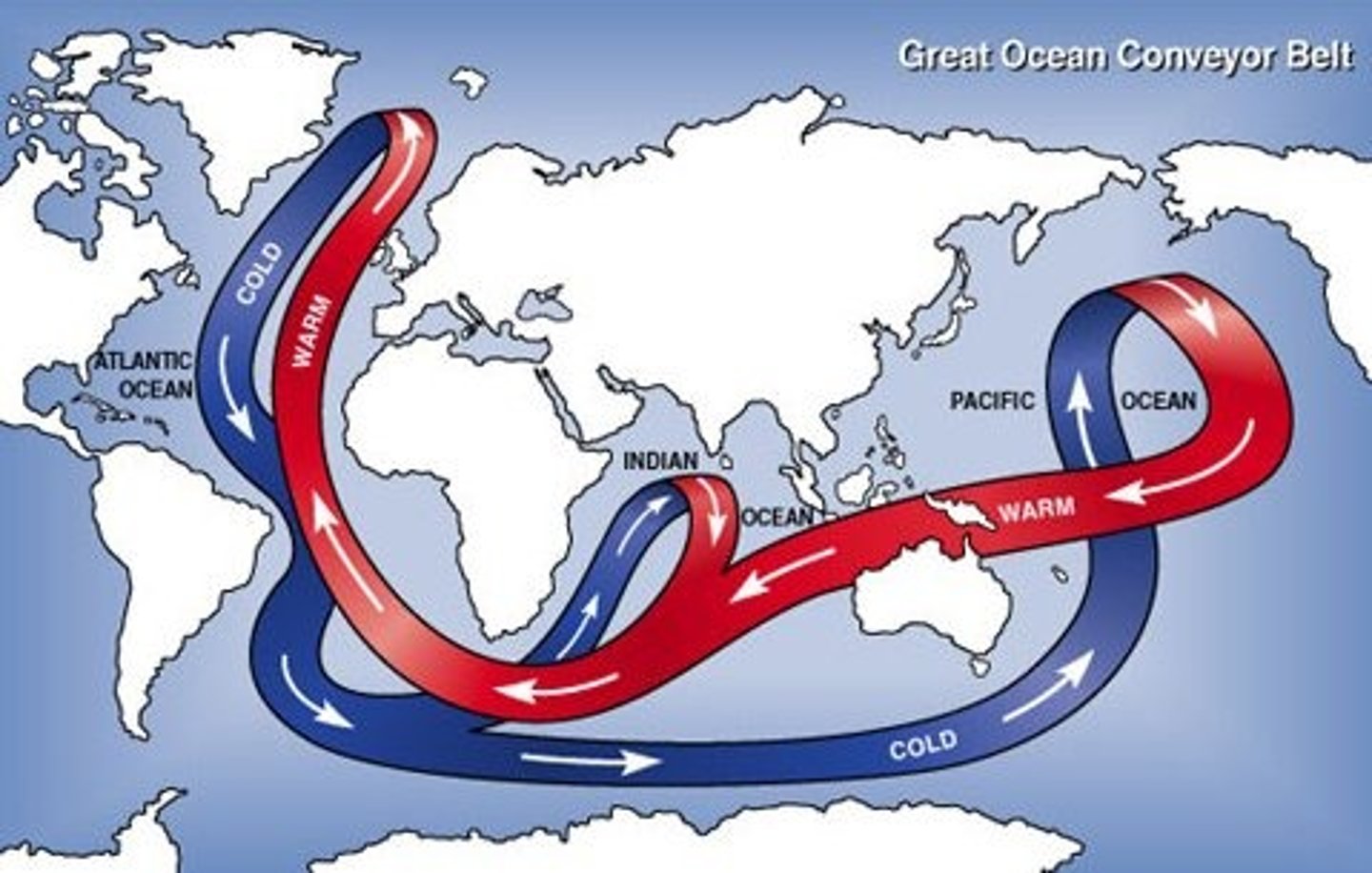
Describe the hadley cell
Warm air near the equator rises, travels horizontally, cools and drops at the horse latitudes (30 degree latitudes).
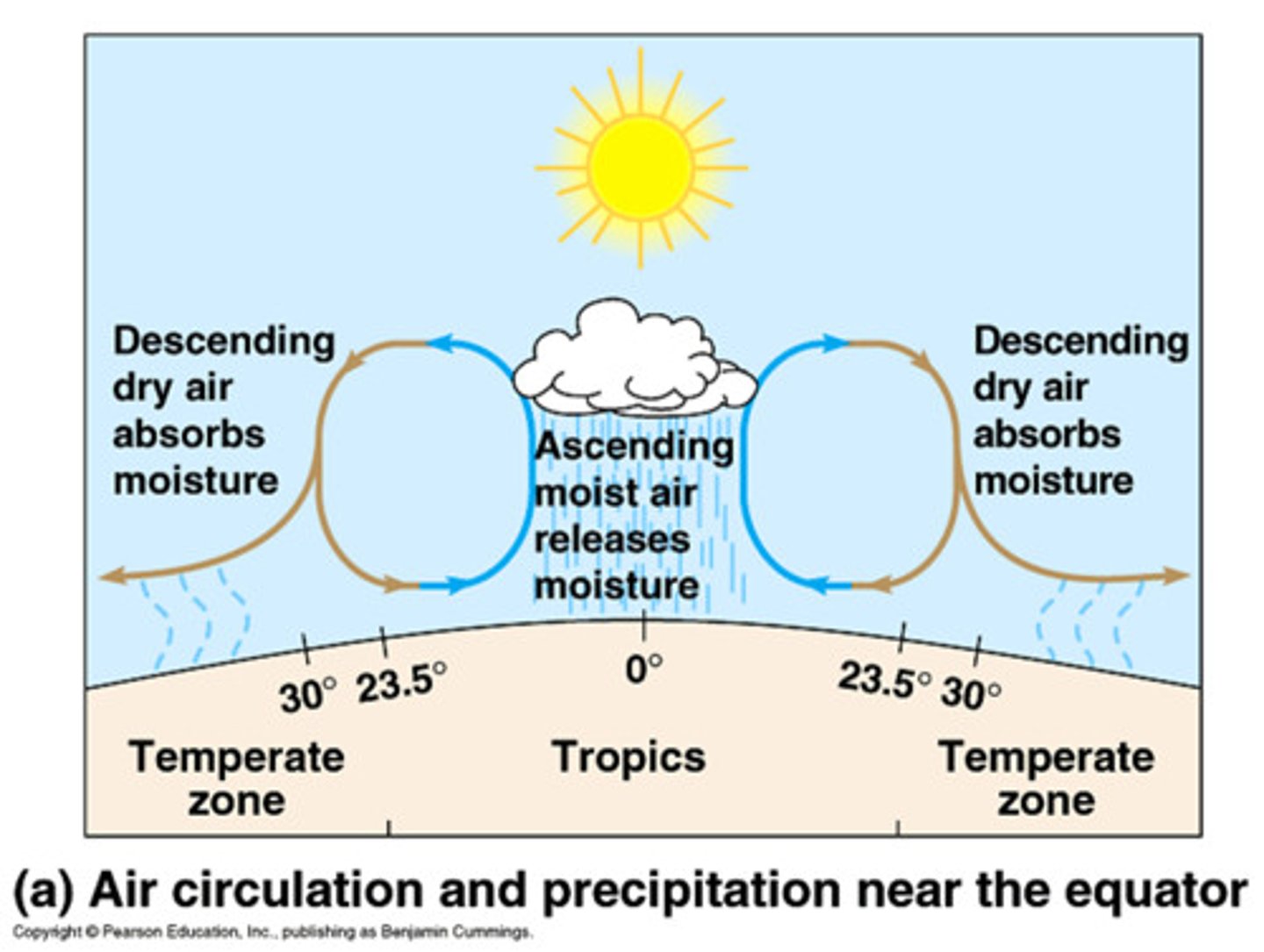
Describe the ascending air of the hadley cell
Moist, hot, less dense air that condenses and forms clouds as it travels horizontally due to convection.
Describe the descending air of the hadley cell.
Dry, dense air that leads to clear skies and deserts on the horse latitudes.
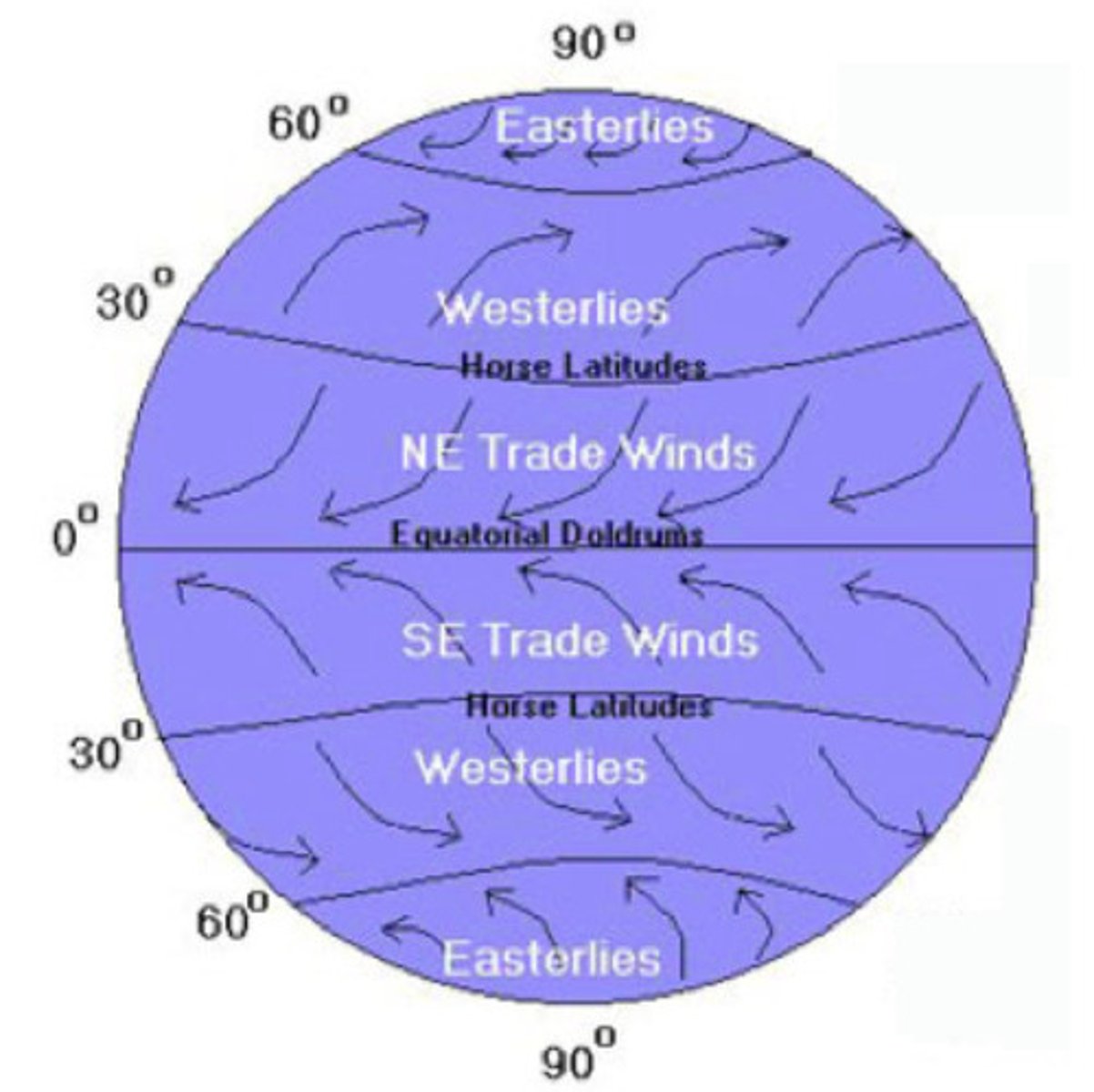
Are westerlies aloft or surface?
Aloft
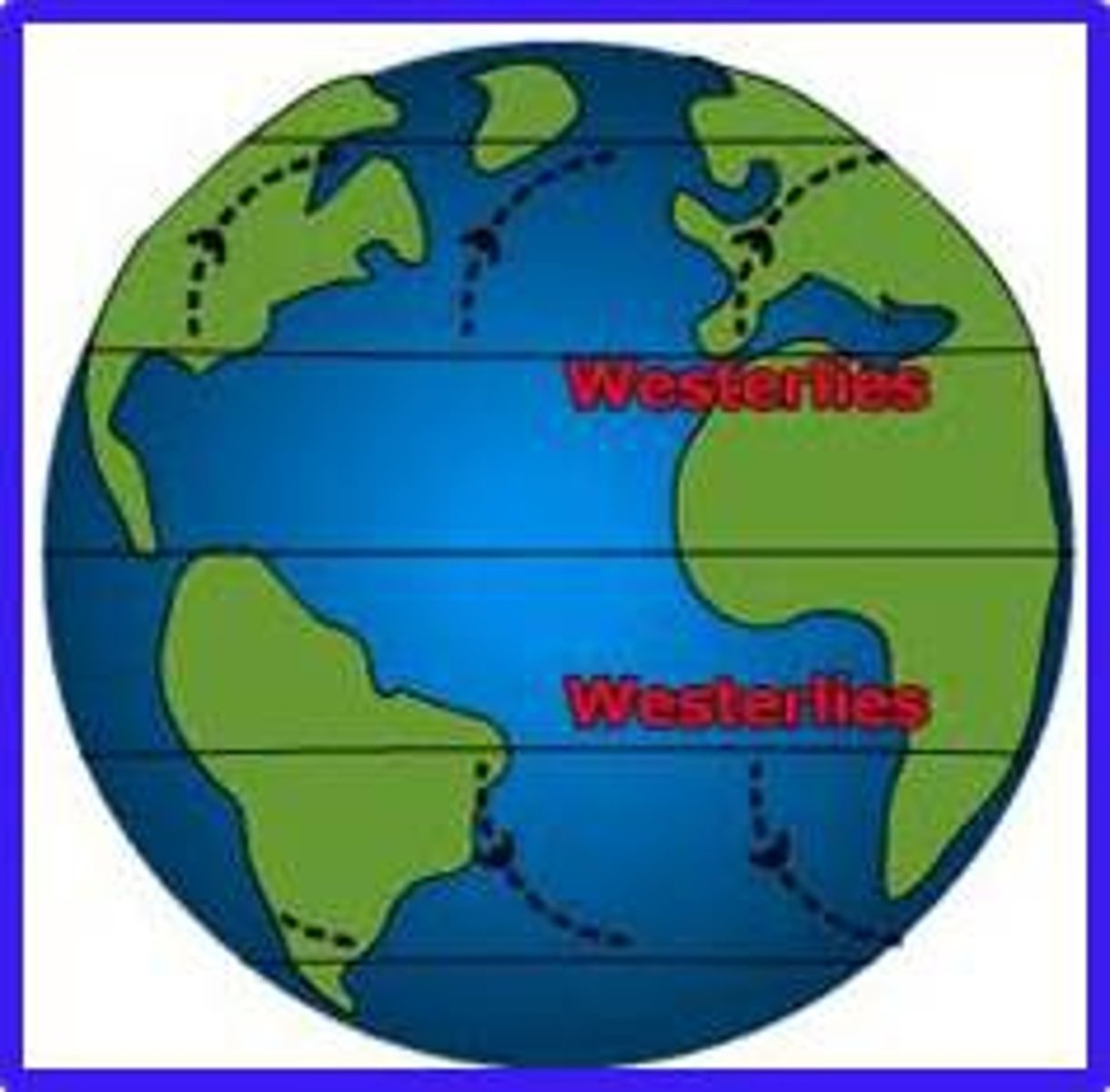
Why is the descending air of the hadley cell warm?
Compressional heating as it sinks
How are trade winds formed?
Warm, dry hadley cell air from the horse latitudes travel towards the equator and are deflected by the coriolis effect.
What direction are trade winds (easterlies) and westerlies?
Easterlies: east to west
Westerlies: west to east
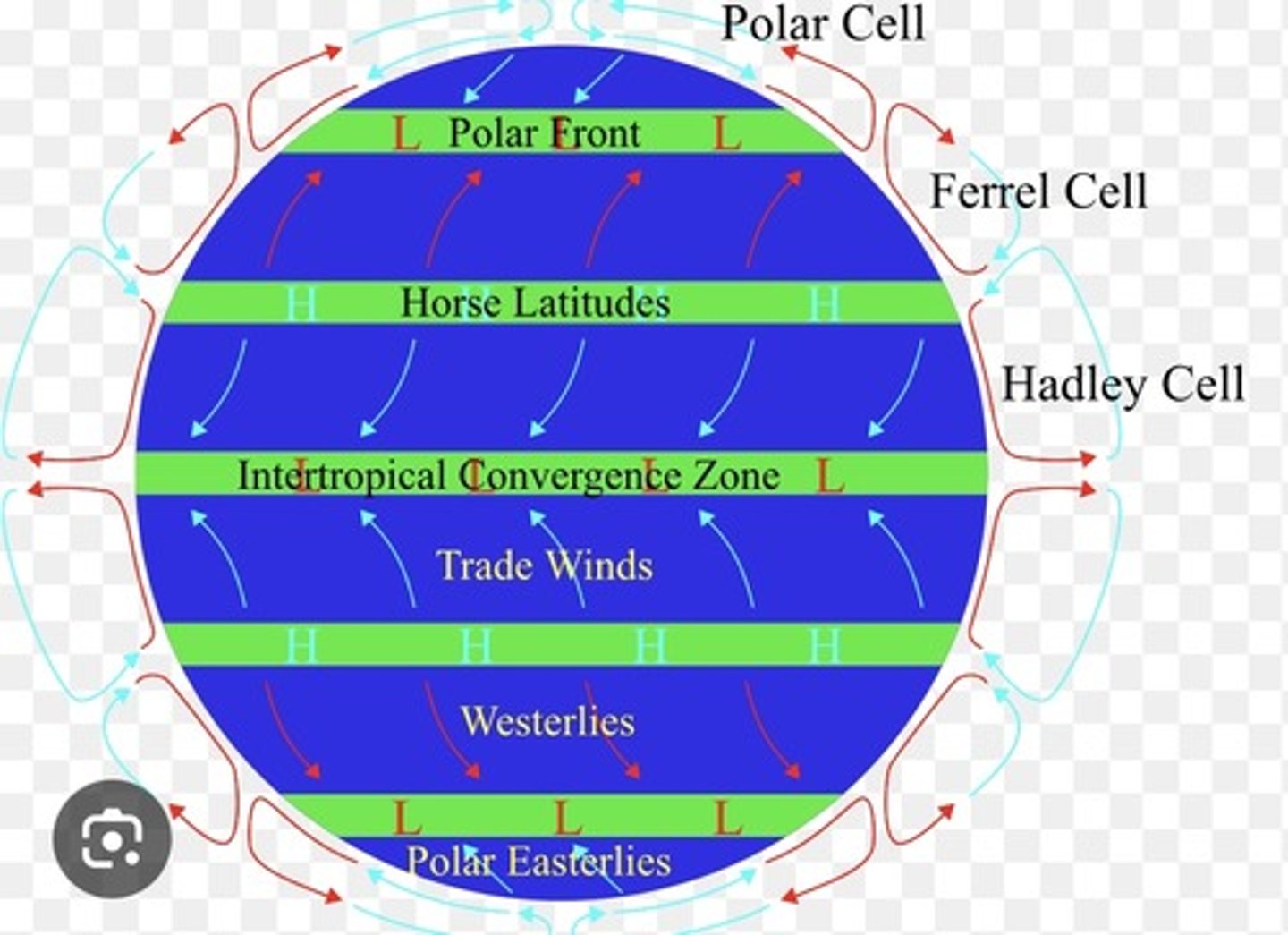
Where do trade winds converge?
Intertropical Convergence Zone (ITCZ)
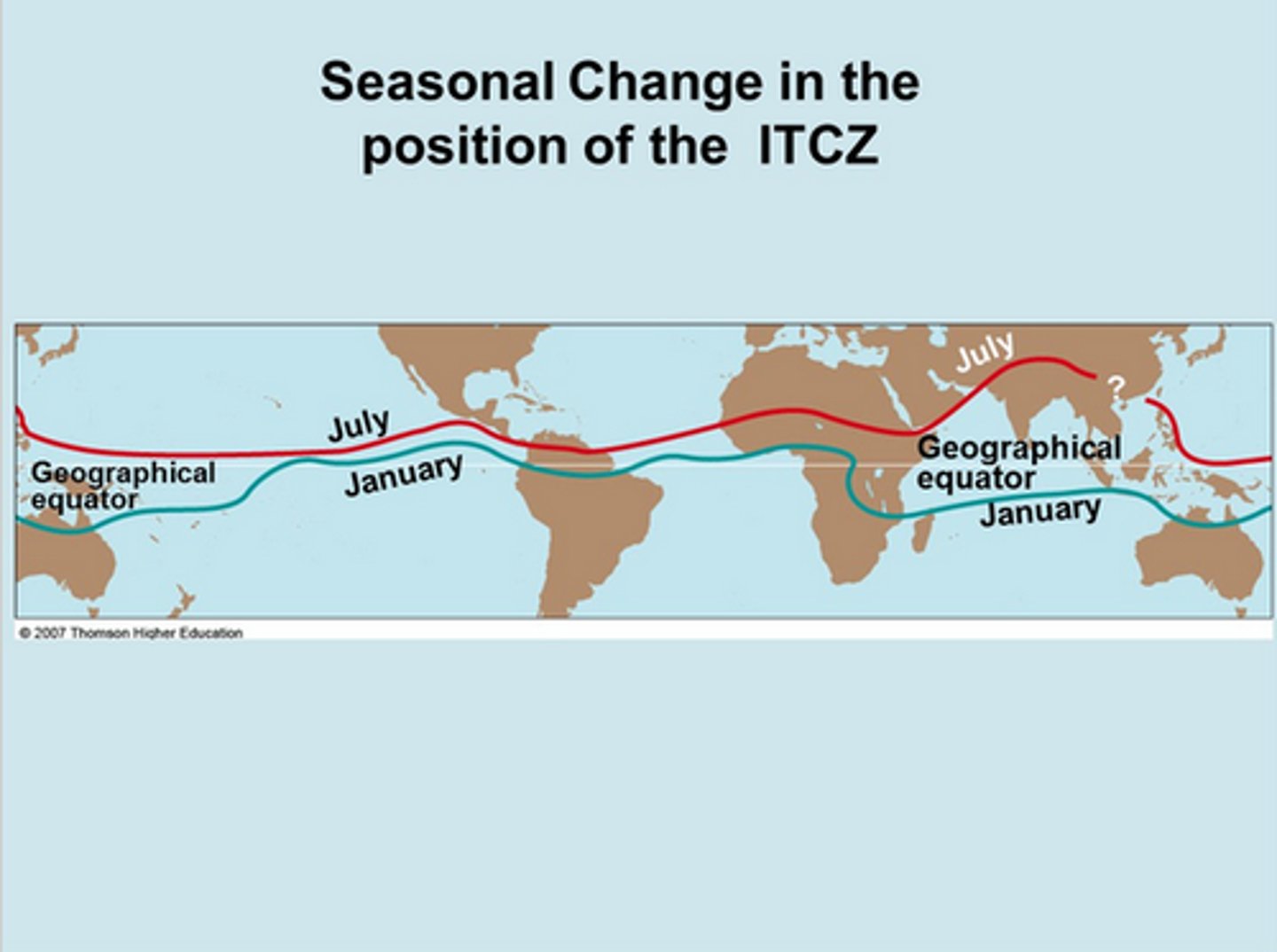
How are prevailing westerlies formed?
Air at the horse latitudes that does NOT move back towards the equator
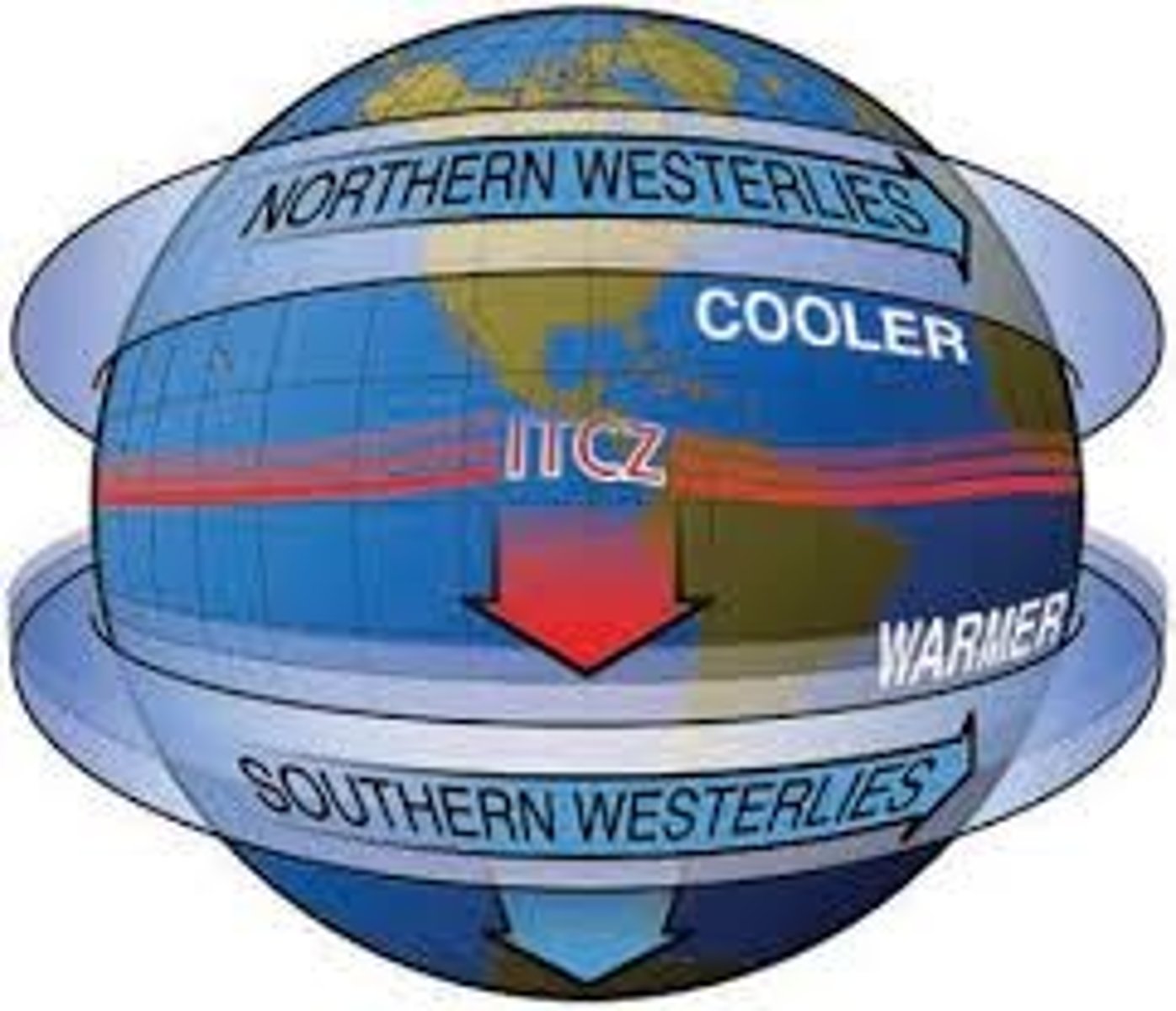
Where is the polar front located?
-Between Ferrel and Polar cells
-60 degrees north and south
How is the polar front formed?
Ferrel and polar cells meet
How is the Ferrel cell formed?
A portion of the rising westerlies goes back to the mid latitudes and completes the convection cell.
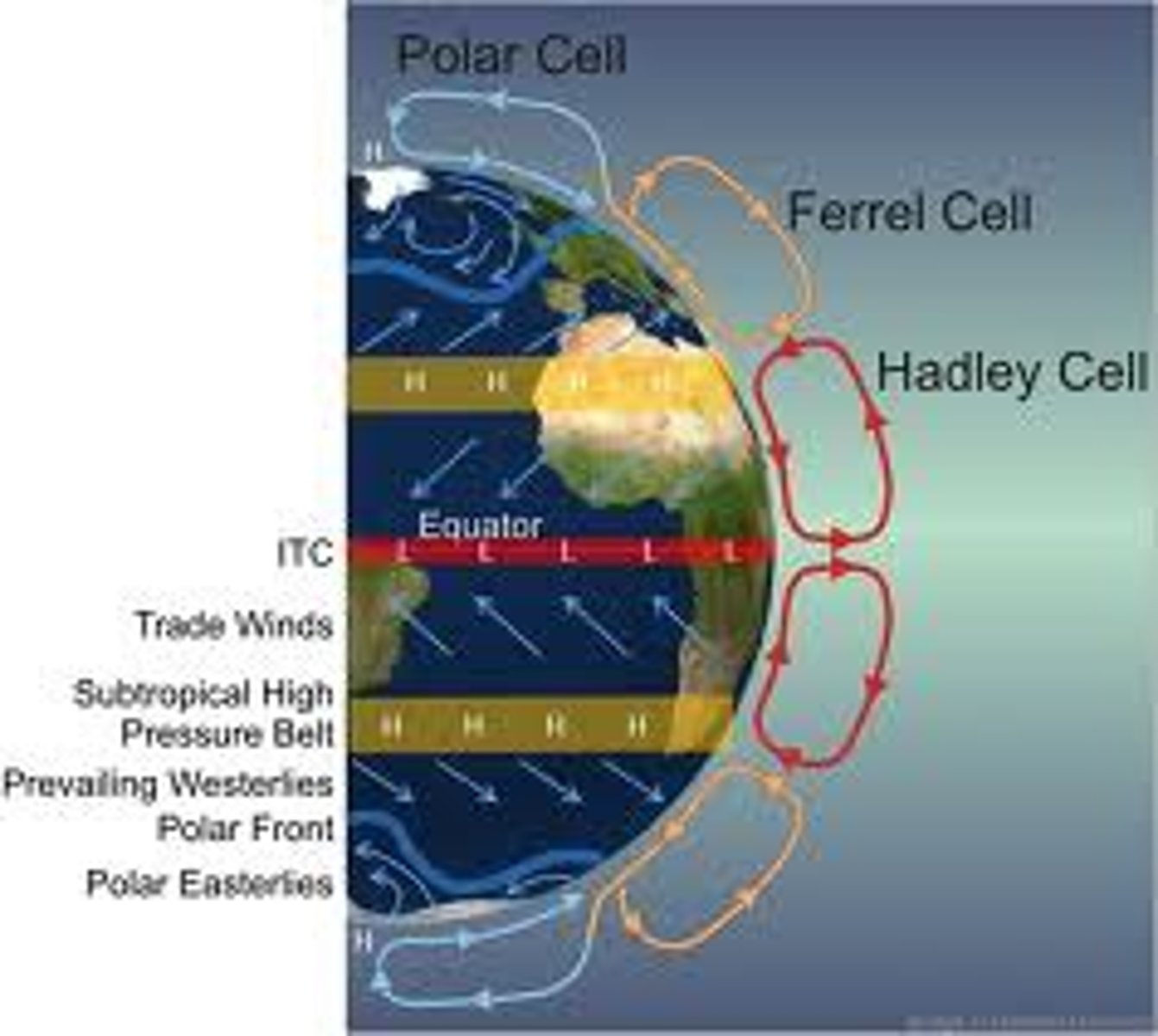
Air that converges at 90 latitude is the...?
Polar high
Air moving back from the poles towards the equator forms the...?
Polar easterlies
What are thermal lows?
When summer heats up systems of high pressure and replaces them with systems of low pressure.
Where does the ITCZ shift during winter and summer respectively (for the northern hemisphere)?
Summer: northwards
Winter: southwards
What are jet streams?
Narrow bands of strong winds.
Where are jet streams?
Near the tropopause
What are the two jet streams?
The subtropical and the polar jet stream
Where are the two jet streams located?
Subtropical: 30 degrees latitude
Polar: 60 degrees latitude
Why do jet streams form?
STEEP pressure gradients forming at the polar and subtropical fronts.
What season are jets strongest? Why?
- Jet streams are strongest during winter because temperature differences are more pronounced during winter.
Where do jet streams move during summer and winter respectively (for the northern hemisphere)?
Summer: north
Winter: south
Where does the convergence happen in the ITCZ?
the surface, not aloft
What are sea and land breezes?
Thermal circulation of winds that reverse directions depending on whether it is day or not.
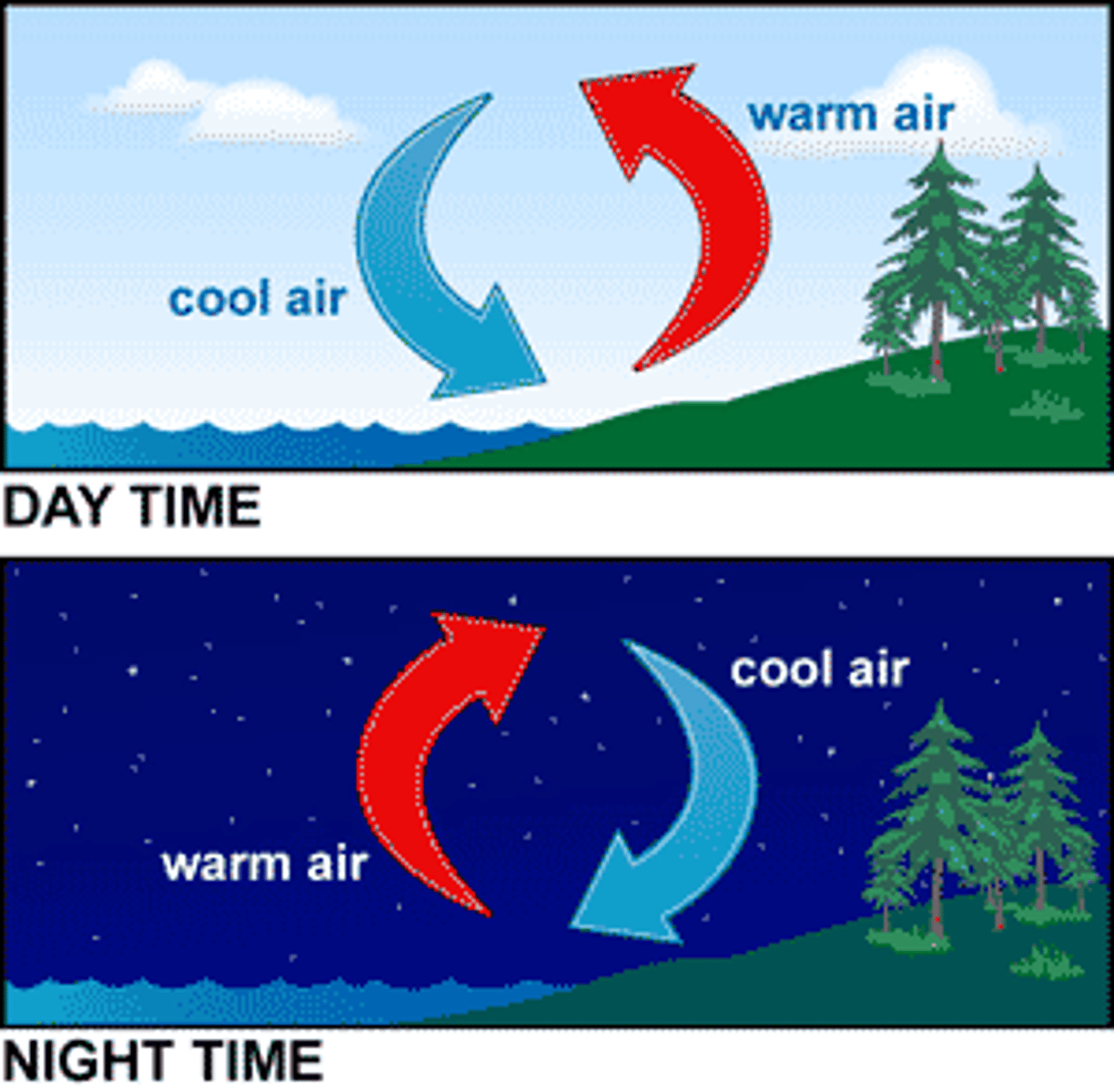
When do sea breezes occur? Why?
During the day because land heats faster than water. The heat creates low pressure above the land. Wind goes from high to low pressure so there is a breeze coming from the sea.
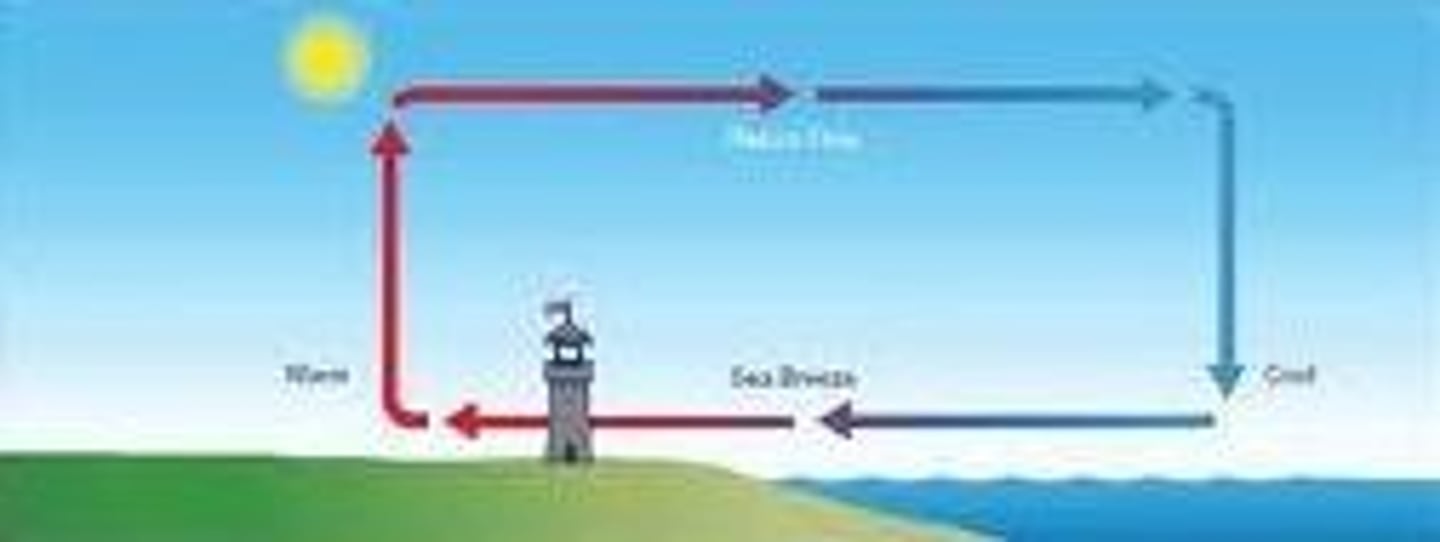
Why do mountain and valley breezes occur?
The mountain warms up and lifts the air (mountain breeze). At night it cools and sinks the air (valley breeze).
What are katabatic winds?
High speed, downslope winds that are faster than typical mountain winds.
Where are katabatic winds typically located?
Plateaus surrounded by mountains.
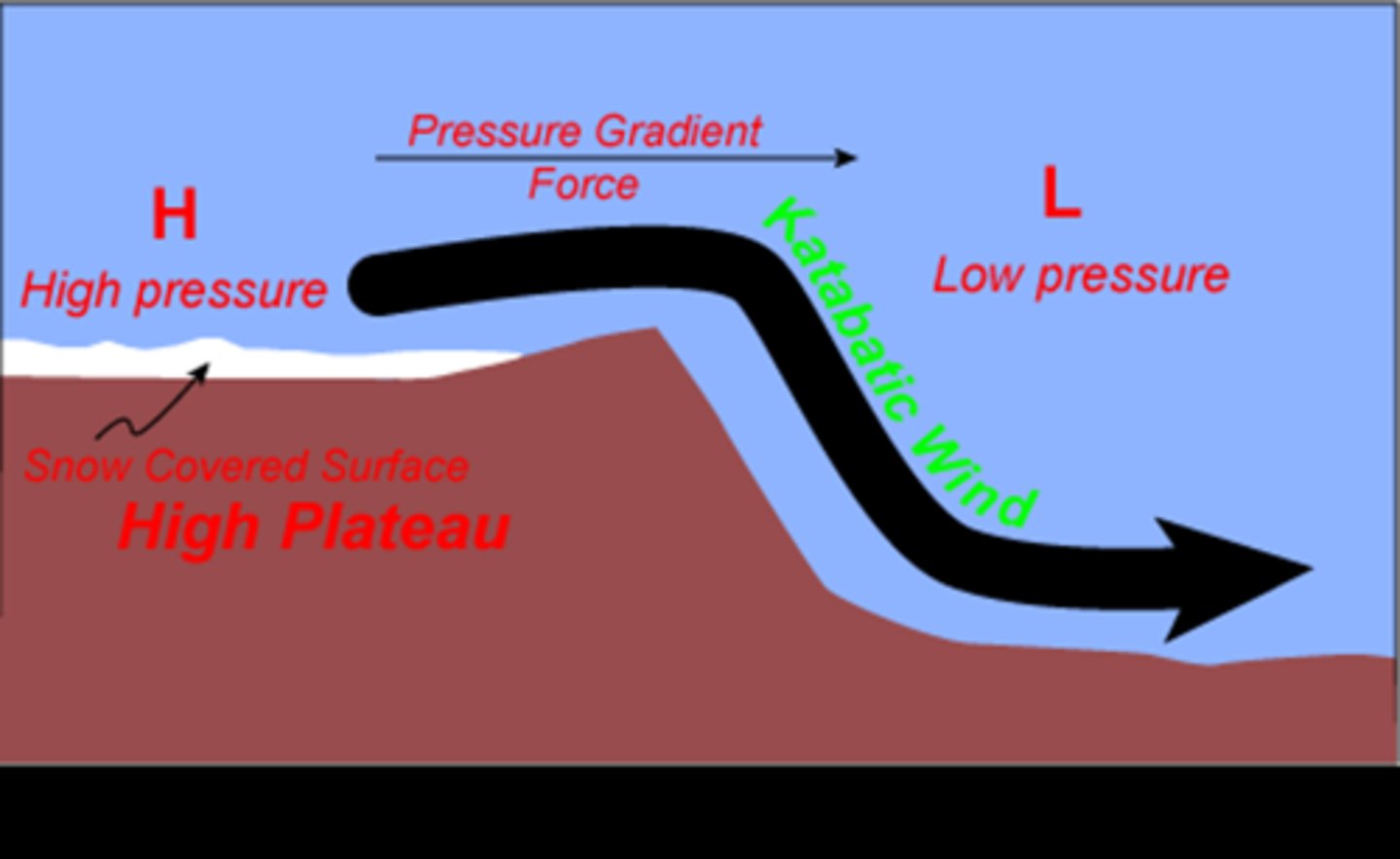
How are katabatic winds formed?
Cold, high pressure air on plateaus move towards lower pressure due to an opening in the mountain surrounding the plateau.
What is an anabatic wind?
An upslope wind driven by insolation heating of the mountain.
What are chinook/foehn winds?
Dry downslope winds that descend from mountains.
why are chinook winds dry?
Due to compression. Wind blowing on the windward sound of a mountain loses its moisture due to precipitating on the windward side. Once it reaches the leeward side, it descends and dries due to compression.
How do clouds affect heat during the day and night?
Day: clouds reflect solar radiation (cooling effect)
Night: clouds absorb radiation (warming effect)
Compare the temperatures of an urban area to a rural area.
During the day and night, urban areas are warmer.